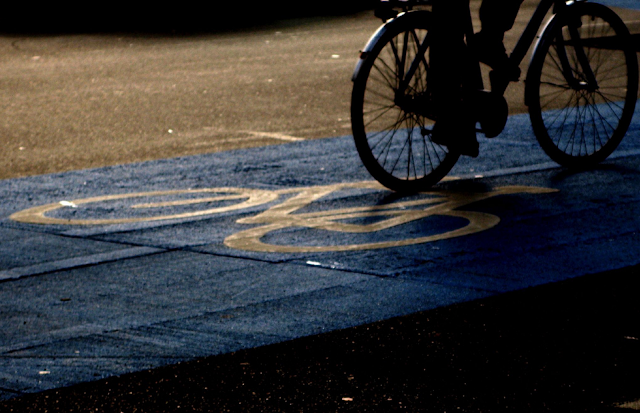The following post is an English translation of Søren Astrup's recent article for the Danish newspaper, Politiken, Gladsaxe satsede på cykeltrafik - og sparede over en kvart milliard kroner:
![]()
The municipality's willingness to provide safe cycling infrastructure has been a good idea, according to new calculations.
Like life-sized cities the world over, the Danish municipality of Gladsaxe, just northwest of Copenhagen, has sought to understand how to make roads safer for their citizens. The solution, they’ve found, is to simply make roads more bicycle friendly. To do so, they’ve transformed 94 percent of the city’s road network to feature either sensible speed limits (30 or 40 km/hr) or dedicated, separated cycle tracks.First set in 1984, the humble goal of making safer streets by way of traffic calming and bicycle infrastructure has been a worthwhile investment. A study carried out by the Aalborg University Traffic Research Group has found the efforts have paid off significantly. To date the city has invested €24 million in traffic calming and cycle infrastructure, while realising €66 million in direct health care savings. The study looked at cycling injuries in the region as well as hospital and emergency room treatments of cyclists involved in an auto collision.
Turns out traffic collisions are expensive
Estimates suggest the improvements in Gladsaxe to have resulted in 4,500 fewer traffic collisions resulting in injuries, all while bicycle traffic has increased by 15 percent.Calculations developed by Cowi Engineering Consultants for the municipality suggest the average public expenditure per person injured in an automobile collision to just over €17,000. A significant part of this cost (hospital treatment, care, and rehabilitation) is covered
And the bicycle keeps paying offFurthermore, the study finds health savings in the municipality to amount to €0.09 per kilometre cycled. And with a 15 percent increase in bicycle traffic in Gladsaxe since 2000, the municipality can boast nearly €5 million in savings.

The municipality's willingness to provide safe cycling infrastructure has been a good idea, according to new calculations.
Like life-sized cities the world over, the Danish municipality of Gladsaxe, just northwest of Copenhagen, has sought to understand how to make roads safer for their citizens. The solution, they’ve found, is to simply make roads more bicycle friendly. To do so, they’ve transformed 94 percent of the city’s road network to feature either sensible speed limits (30 or 40 km/hr) or dedicated, separated cycle tracks.First set in 1984, the humble goal of making safer streets by way of traffic calming and bicycle infrastructure has been a worthwhile investment. A study carried out by the Aalborg University Traffic Research Group has found the efforts have paid off significantly. To date the city has invested €24 million in traffic calming and cycle infrastructure, while realising €66 million in direct health care savings. The study looked at cycling injuries in the region as well as hospital and emergency room treatments of cyclists involved in an auto collision.
Turns out traffic collisions are expensive
Estimates suggest the improvements in Gladsaxe to have resulted in 4,500 fewer traffic collisions resulting in injuries, all while bicycle traffic has increased by 15 percent.Calculations developed by Cowi Engineering Consultants for the municipality suggest the average public expenditure per person injured in an automobile collision to just over €17,000. A significant part of this cost (hospital treatment, care, and rehabilitation) is covered
And the bicycle keeps paying offFurthermore, the study finds health savings in the municipality to amount to €0.09 per kilometre cycled. And with a 15 percent increase in bicycle traffic in Gladsaxe since 2000, the municipality can boast nearly €5 million in savings.